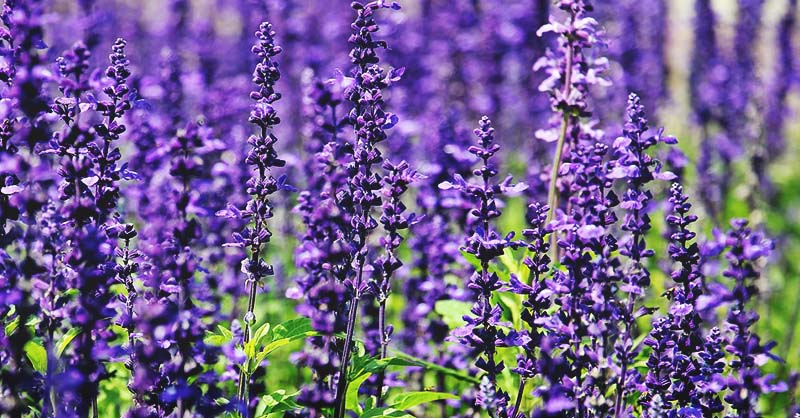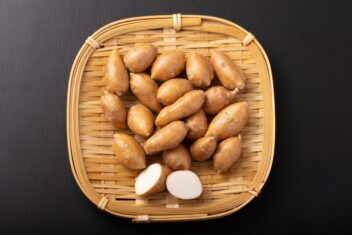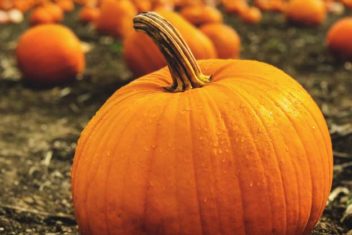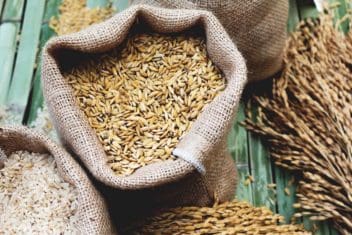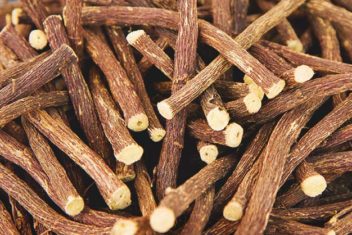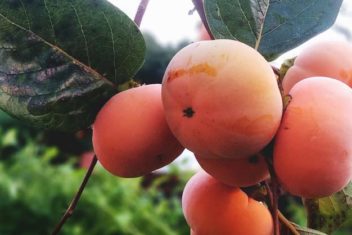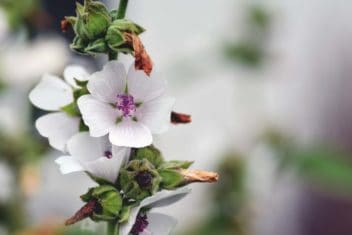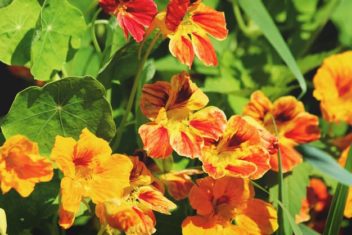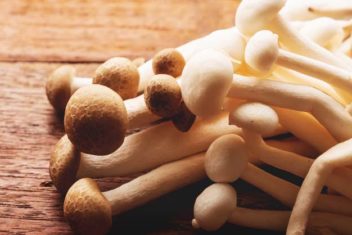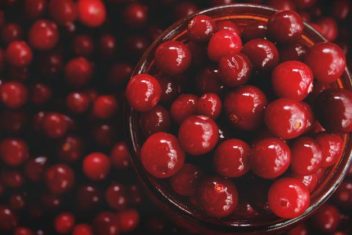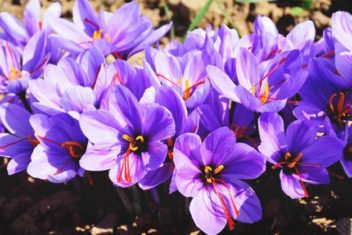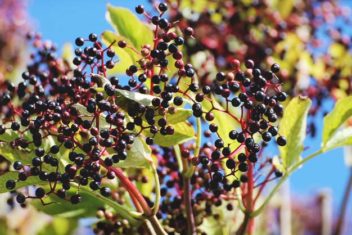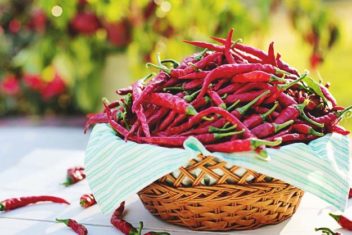Lavender is a Mediterranean native that has spread across the globe thanks to its luscious scent and multiple useful properties. Almost everyone has experienced the pungent, floral aroma that you can find in perfumes, potpourri, and soaps. Besides smelling heavenly, lavender is marvelous in cooking and has myriad medicinal qualities.
Of course, even if it wasn’t so practical in the home, it makes an alluring addition to the garden. Growing lavender attracts beneficial insects such as bees and butterflies, and many varieties resist deer and rabbits. The sharp scent also deters unwanted pests like mosquitoes, mice, and moths.
The fragrant herb lends itself to growing in containers or in edible landscaping, and a single mature plant can yield up to 400 stems each season. Ready to make lavender a part of your garden? We’ll show you everything you need to know.
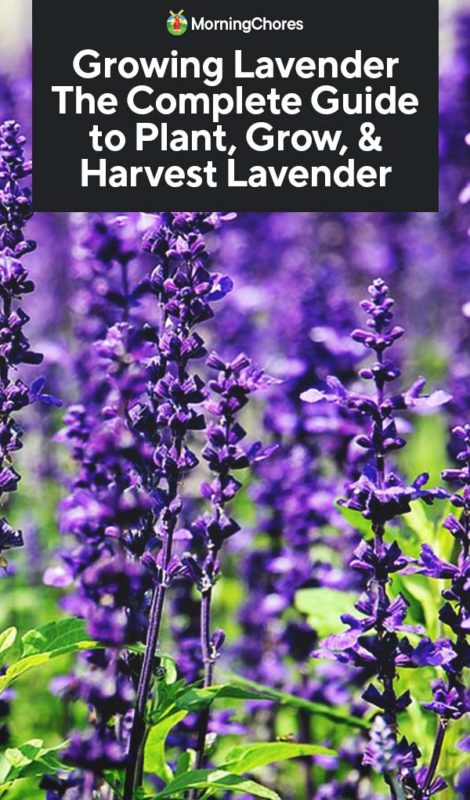
Lavender Varieties
Lavender is divided into five main groups: English, French, Hybrids, Egyptian, and Spanish. Each group is unique in their growing and climate requirements, so pick the variety that’s best suited for your garden and needs.
For all types, flowers grow on spikes in the summer and are most common in purple and blue but come in pink and white as well. The grey-green foliage stays evergreen throughout the winter.
English Lavender (Lavandula angustifolia)

English lavender does well in zones 5-8. If you live in a colder climate, this is the variety for you.
Munstead is a popular English type with blue-purple flowers that does well in cooler areas. It’s taller than some, at 18-24 inches, making it ideal for flower bouquets and sachets. It has a rich fragrance and is particularly flavorful.
Silver Mist features striking silver foliage that adds beauty to the garden even when it isn’t blooming.
French Lavender (Lavandula stoechas)
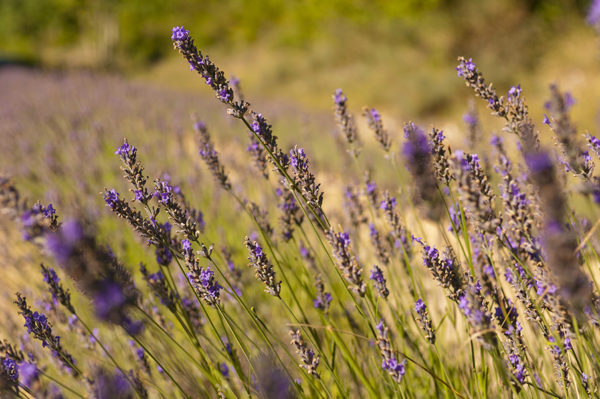
French lavender has grayish leaves with a serrated edge. It grows well in zones 7-10 and isn’t cold hardy. This species has pointed leaves and isn’t as heavily perfumed as English lavender. It does well in rock gardens and along pathways, because it’s tolerant of sandy soils.
Goodwin Creek Grey French Lavender is an outstanding variety in this category. It also grows well in rock gardens and containers. It needs a warm area to thrive.
Spanish Lavender (Lavendula stoechas subsp. pedunculata)
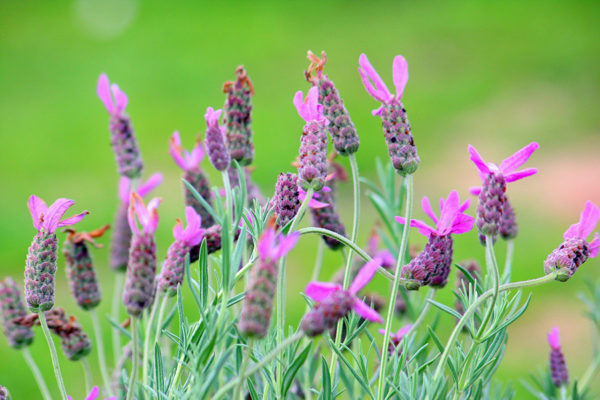
Spanish lavender is the true southern belle of the lavender world and grows in zones 7-10. This type tolerates humidity, unlike most lavender plants. It has unusual flowers with a pineapple shape and a eucalyptus-like fragrance.
Anouk has large flowers and a sweet scent. It’s deer and rabbit resistant and does well in containers or perennial beds.
Egyptian Lavender (Lavandula multifida)
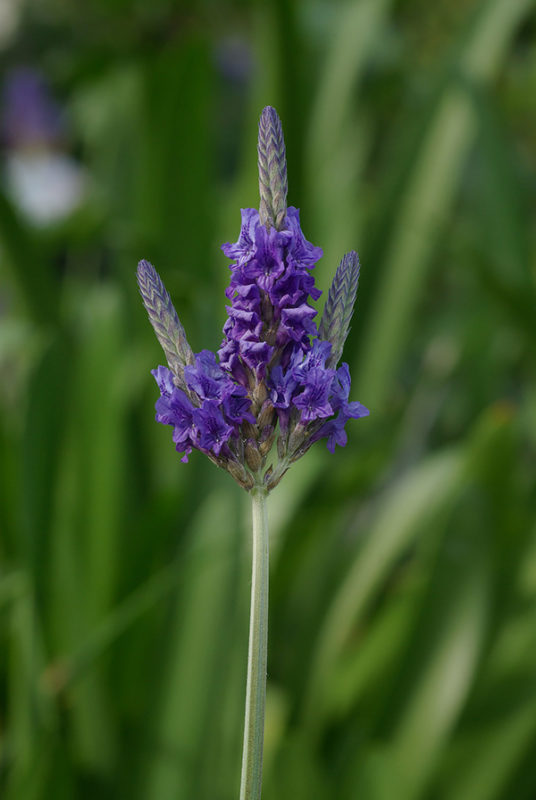
Also known as fern leaf lavender, this type is shorter-lived than others. It prefers dry conditions and can tolerate some shade. It has a lovely peppery aroma. Fernleaf lavender grows in zones 5-9 and has vibrant, deep violet flowers that are particularly suited to cooking.
Hybrids (Lavendula x Intermedia)
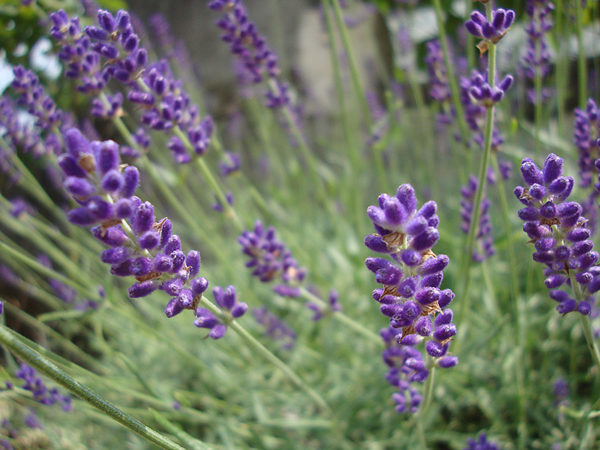
Hybrids of two lavender plant types are called Lavandin. They often combine the best qualities of both.
Provence is popular for its intensely fragrant flowers. It tolerates poor soils and humidity better than other varieties. If you want to make sachets or potpourris, check this one out.
Thumbelina Leigh is a small plant that only gets 10-12 inches tall. It grows well in rock gardens and along pathways, adding a sweet scent to your walk.
Phenomenal can handle a range of temps, from a chill in winter to extreme heat. It’s also disease resistant. The rich purple flowers attract beneficial insects and are high in essential oils, making it ideal for crafters.
Fringed Lavender (Lavandula dentata)

This plant is sometimes also called French lavender and features lance-shaped leaves with a wooly texture.
Royal Crown has a strong fragrance – even the foliage smells good – with a mixture somewhere between lavender and rosemary. It grows compact and can handle a bit of cold. The purple flowers are long-lasting.
Planting Lavender
There are a few key elements to successfully growing lavender. It wants lots of heat and sun, not too much water, tons of space to spread out, and lean soil.
Sun and Temperature Requirements
Lavender is a sun worshiper and appreciates full sun in areas with good air circulation. Give it at least 6 hours of light a day.
Lavender also likes heat. It grows well in zones 5-9.
If you want to try lavender, but you have a slightly colder climate, try placing your plants near a southern-facing stone wall and put stone mulch or rocks around your plants to trap heat.
Soil Requirements
Because it’s a Mediterranean native, growing lavender likes warm, sandy, rocky soils. Well-drained soil is a must for lavender. You can add sand or small rocks to your soil if you live in an area with heavy clay.
Raised beds are advantageous when growing lavender as they provide good drainage and air circulation.
Lavender likes slightly alkaline soil with a pH of between 5.8-8.3. You may need to add lime to bring your pH up.
Growing Lavender From Transplants
Lavender is typically planted from transplants. You can find the best selection of varieties online. Your local garden store will probably have the more common varieties such as Munstead and Provence.
Plant transplants in the soil after the danger of frost has passed in northern climates. Plant in November in warmer regions.
Growing Lavender From Seeds
Lavender is challenging to germinate from seed. Start seeds 3 months in advance of your estimated transplant date.
Plant seeds in peat pots at 4-6 inches deep. This will help reduce transplant shock when you put them in the garden. Use a light seed starting mix and pre-wet the soil before sowing.
Lavender seeds are tiny, so put a pinch in each pot and press down gently. Cover your seed tray with a plastic lid or put inside a garbage bag.
Place the tray in a cool location or a refrigerator for 4 weeks. Lavender needs to have a cool period before it will germinate.
After this cool dormancy is over, take the plants out, remove the cover and put them in a warm room with supplemental grow lights. They should start germinating in about one week. Plant outside when they have reached 5-6 inches tall.
Spacing Lavender
Some plants like to be crowded together, but not lavender. It needs its space. Give plants 2-3 feet with 3-6 feet between rows. If you live an area that’s humid, give plants even more space. Lavender doesn’t like humidity, and plenty of room lets them breathe.
Growing Lavender in Containers
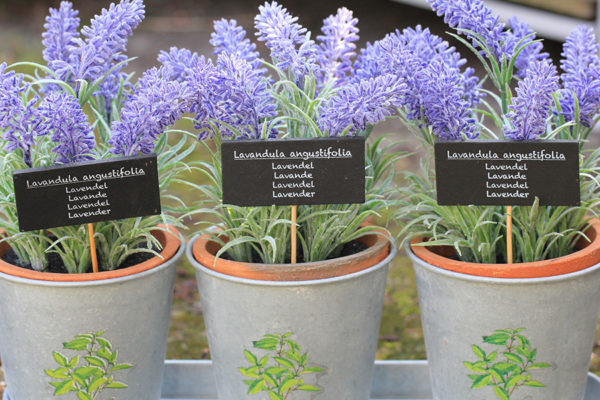
If you don’t have the ideal climate, consider growing lavender in containers. That way, you can bring them inside during bad weather and enjoy them all year-round. French lavender is particularly suited to containers.
Select a 12-inch or larger pot with drainage holes and add rocks to the base to promote drainage. Fill will potting soil amended with sand and drop your plants in. Place in a sunny area. If you live in an area that doesn’t get much sun in the winter, you’ll need to add grow lights to the mix.
Growing lavender in containers requires special attention to acidity in the soil. Add a bit of lime every month to make plants happy.
Caring for Your Lavender
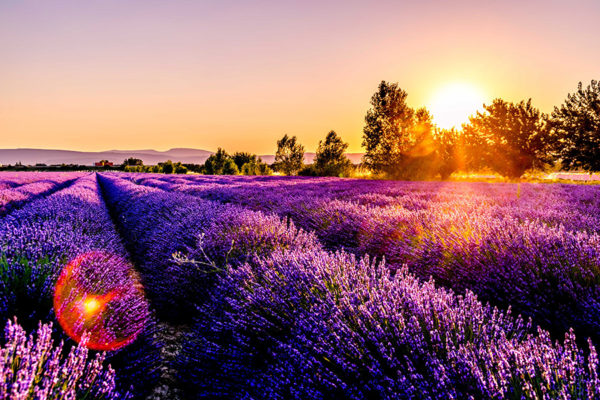
Water Needs
Water once a week until plants are established. Lavender is drought tolerant and does not like wet feet, so plan to give it about an inch of water a week once established only during dry spells.
Fertilizing Lavender
Lavender doesn’t require fertilizer. A yearly layer of well-aged compost spread on the soil surface in the bed will suffice. Over-fertilizing will cause excessive leaf development and fewer flowers.
Mulching Lavender
Lavender is cold sensitive so you may need a winter mulch. Small chipped wood mulch or pea gravel is best. Make sure the mulch is not touching the base of the plants.
Pruning
Good pruning is key to keep growing lavender looking tidy and producing robust blossoms. Prune right after the plant flowers and at the beginning of fall. Remember, lavender has a bushy growth habit, so trim regularly to keep the spaces between plants open.
Common Lavender Pests & Problems
Lavender is susceptible to problems caused by dampness and poor air circulation. The best remedy is to provide plenty of space between plants.
Root Rot
Root rot is caused by a pathogen that destroys the plants’ root system. The destruction is usually pretty far along by the time you notice symptoms. Prevent root rot with well-drained soil and by letting the soil dry out between watering.
Black Mold
As we all know by now, lavender doesn’t like water. Too much and it may get black mold, a pest that covers plants in a mold that looks like soot from a fire. Keep pests away using neem oil, because they can spread the mold, and give plants plenty of space.
Whitefly and Aphids
The whitefly likes to eat plant sap and can damage plants, reducing growth. Aphids can spread disease. Both can be controlled by spraying the plant with water and manually removing bugs. You can also spray plants with neem oil.
Spittlebug
If you spot white soapsud-like foam on your lavender plants, you may have spittlebugs. These pests don’t really harm plants, but they can weaken them if an infestation gets too large. Spray them off using water or spray plants with a homemade spray.
To make the spray, combine 5 chopped garlic cloves, 1 cup of water, 1 tablespoon liquid soap with 1/2 cup jalapeno or habanero peppers. Puree and sprinkle on plants.
Alfalfa Mosaic
Alfalfa mosaic can stunt plants and cause distorted growth. It is spread by aphids, so controlling the arachnid is key. Tools should be treated in a 1:10 bleach and water mix to prevent spreading the disease. Keep weeds under control as well.
Lavender Shab
Phomopsis lavandula is a fungus that kills lavender stems, causing shoots to wilt and whither. You’ll see little black shapes emerging from the bark of established plants. If you see it, remove and dispose of infected plants. Luckily, it’s becoming a fairly rare disease these days.
Xylella Fastidiosa
This bacteria will cause leaf scorch and wilted foliage on lavender. It can kill off an entire plant in one growing season. Remove and dispose of any infected plants. Prevent it by keeping pests and weeds away.
Companions for Growing Lavender
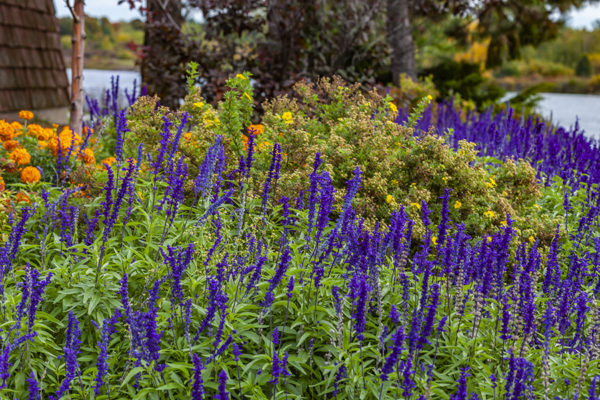
Lavender is an excellent companion for many herbs, vegetables, and flowers. Plant in a perennial herb bed with rosemary and sage and all three will thrive with similar care.
Lavender produces a pleasing aroma for us, but not so pleasant to flies, mosquitoes, and beetles. It repels the cabbage moth and makes a good companion for cabbages and cauliflower. It can also be planted around apple trees to repel the codling moth.
In the flower garden, lavender compliments Black Eyed Susans, asters, pentas and hyssop. Because of its deer resistance, you might also try putting a couple plants near your hostas.
Best Companions:
- Rose
- Broccoli
- Cauliflower
- Rue
- Cabbage
- Petunia
- Pear
- Plum
- Peach
- Cherry
- Mint
- Apple
- Sage
- Rosemary
- Thyme
Harvesting and Using Lavender
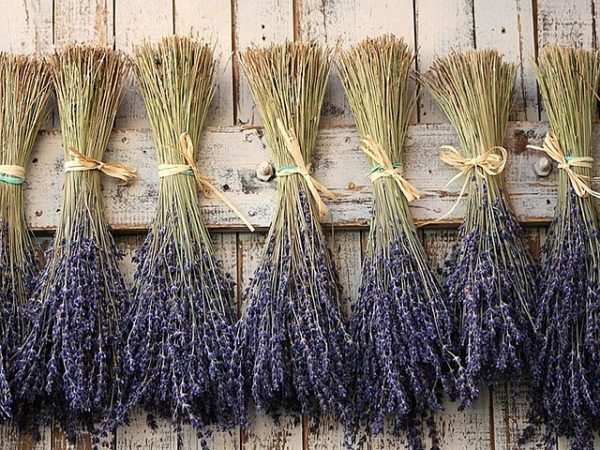
Harvest when approximately one-half to one-third of the flower buds are open if you are using lavender for oil. Cut low on the stem about two inches from the stalk early in the morning to conserve the volatile oils.
Dry lavender by hanging it in a dry, warm spot away from sunlight for 2-3 weeks.
You can keep cut lavender alive for a few days by placing cut stems in a jar of water.
Cooking with Lavender
Lavender adds sweet, peppery, and floral notes to dishes and drinks.
In drinks, try it mixed with sweet tea and lemonade. To make lavender tea, use one teaspoon of dried lavender in a diffuser and let it steep for 10 minutes. You can also add it to sparkling water with a little sugar for a summer spritzer.
Lavender lends itself particularly well to baked goods like scones and cakes. One of my favorite things to eat for Sunday brunch is pound cake. Lemon Lavender Greek Yogurt Pound Cake is sure to get a place in your must-have recipes.
Not just good in desserts and drinks, lavender pairs well with meats like turkey and chicken.
Lavender as Medicine
Lavender has a variety of medicinal uses. It can relieve anxiety, insomnia, headache, and pain. It also has antibacterial and antifungal properties.
A few drops of oil can help heal canker sores, and a lavender oil massage can ease menstrual pain.
Lavender Around the Home
Tie a bunch of dried lavender behind the showerhead in the bathroom. The steam from the shower will release the aromatic oils and make your shower smell fragrant and relaxing.
Use it in bath soap for a calming feeling after a stressful day at work.
I love putting lavender into fresh-cut bouquets and setting on the dining room table. They make the room smell fresh and clean.
There are so many reasons to love lavender. On the face, lavender is a beautiful, sweet-smelling flower. But when you scratch below the surface, you find an herb with soothing medical qualities and tasty ways to improve your recipes.
